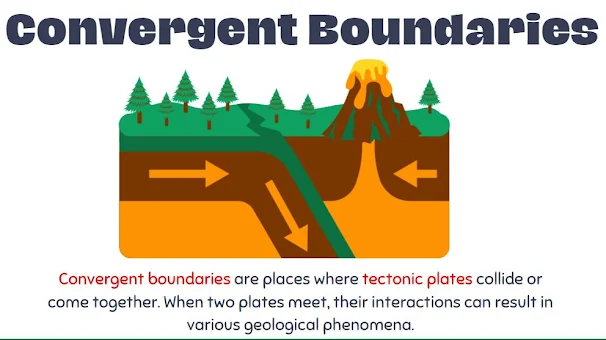Tectonic Plates
The Earth's crust is divided into large pieces called tectonic plates.
Plate tectonics, a theory dealing with the dynamics of Earth’s outer shell—the lithosphere—that revolutionized Earth sciences by providing a uniform context for understanding mountain-building processes, volcanoes, and earthquakes as well as the evolution of Earth’s surface and reconstructing its past continents and oceans.
Types of Plate Boundaries:
At divergent boundaries, plates move away from each other. This movement results in the creation of new crust as magma rises from the mantle, solidifies, and forms new oceanic crust.
On land, divergent plate boundaries create rift valleys. The crust in these areas stretches and thins, causing the land to sink and create a valley. Magma from the mantle can rise to the surface, leading to volcanic activity.
Divergent boundaries are responsible for the continuous reshaping and formation of Earth's crust.
Convergent boundaries are places where tectonic plates collide or come together. When two plates meet, their interactions can result in various geological phenomena.
When two continental plates collide, neither plate is subducted due to their low density. Instead, the two plates compress and crumple, creating highly folded and uplifted mountain ranges.
Convergent boundaries contribute to the formation of mountains, volcanic activity, and earthquakes.
Transform boundaries occur when two plates slide past each other horizontally. The movement along these boundaries can cause earthquakes, as the plates grind against each other.
Unlike convergent or divergent boundaries, there is no creation or destruction of crust at transform boundaries. The plates simply grind against each other horizontally.
Unlike convergent or divergent boundaries, there is no creation or destruction of crust at transform boundaries. The plates simply grind against each other horizontally.


